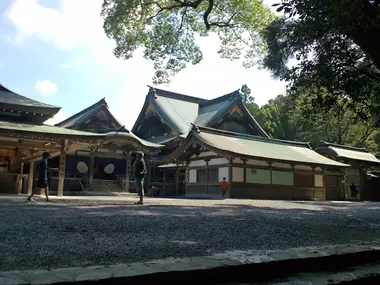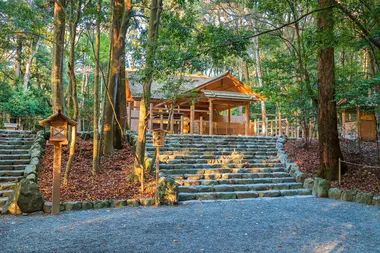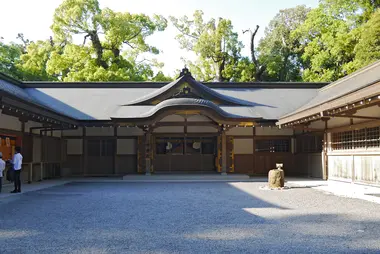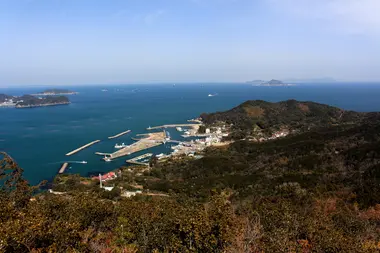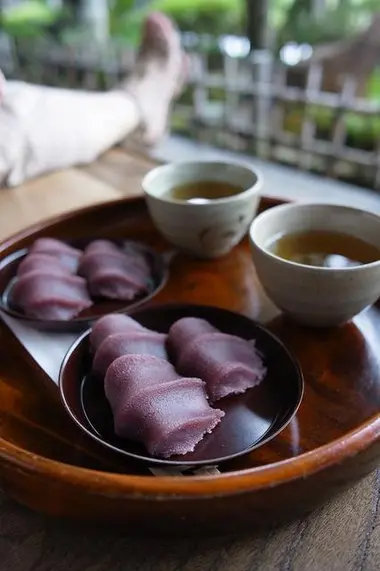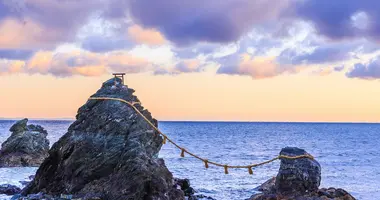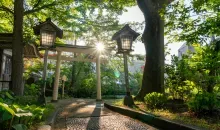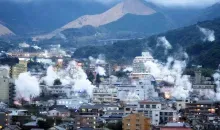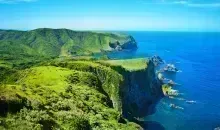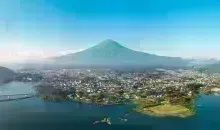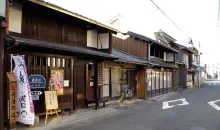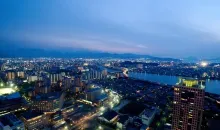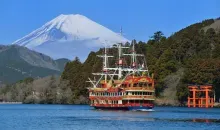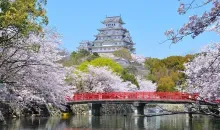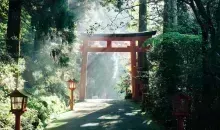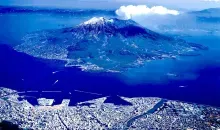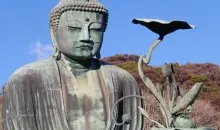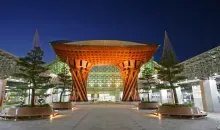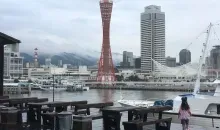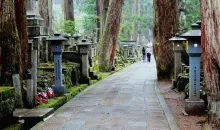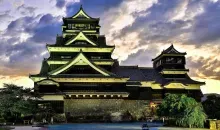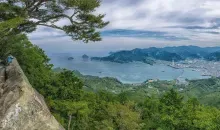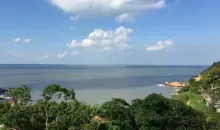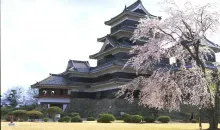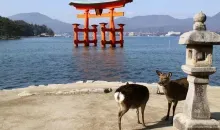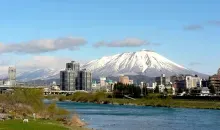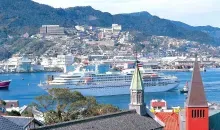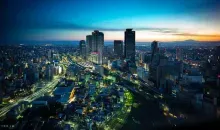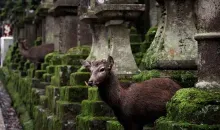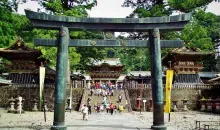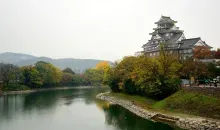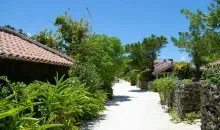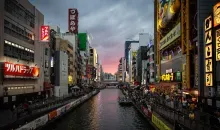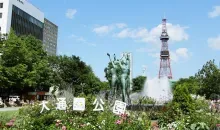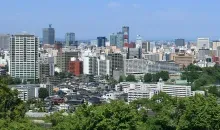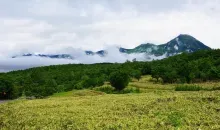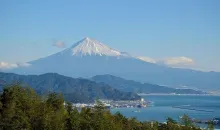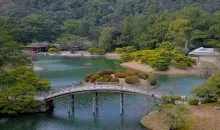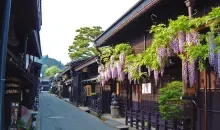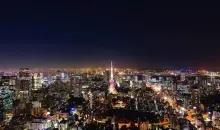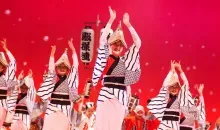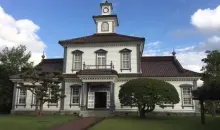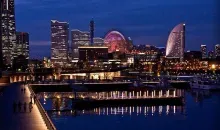Ise
- Publicado el : 28/08/2020
- Por : G.L/Ph.L
- Youtube
Descubre la ciudad más sagrada de Japón
Perdida en medio de la prefectura de Mie, Ise irradia un aura misteriosa. Lugar de nacimiento de la diosa del sol Amaterasu, en esta pequeña ciudad rural está Ise-Shingu, el santuario más sagrado de Japón. Por su historia y su geografía, acoge cada año a miles de visitantes deseosos de descubrir todos sus misterios.
The birthplace of the goddess Amaterasu
Perhaps the most well-established attraction in Ise City is the famous Ise-Jingu Shrine. Arguably the most significant Shinto grand shrine in all of Japan, it was initially erected in honor of Amaterasu, the sun goddess attached to the imperial family, all the way back in the year 4 B.C.E. The religious complex consists of 125 smaller shrines and is said to be "the soul of Japan."
Go through the Uji Bridge to access the Naiku Shrine, the birthplace of the goddess Amaterasu. Ancient visitors believed its wooden construction would wash away their sins from those who pass through it.
The most prized shrine in the country, the Naiku is said to house the yatano kagami mirror, one of the three sacred relics of Japan, and was used to bring Amaterasu out of the cave in which she had been hiding following a violent argument with her brother Susanoo, the god of storms.
A tiro de piedra, no olvides que el Museo Sengukan está abre sus puertas de par en par. Accesible para todos, ¡guarda los secretos de más de 1.000 años de mantenimiento del sitio!
Un centro culinario, las especialidades gastronómicas de Ise
Ise no sólo es rica en espiritualidad, sino también en gastronomía. En el corazón de la ciudad, el tradicional barrio de Oharai-machi se extiende a lo largo de más de un kilómetro. Con sus casas de madera y su arquitectura del periodo Edo (1603-1868), el distrito que bordea el río Isuzu ofrece un paréntesis bucólico, un viaje en el tiempo a los días en que los peregrinos que acudían a Ise-jingu a meditar animaban las calles.
One of the other crown jewels for scenery in Ise, however, is Mount Asamagatake, elevated above the city and presenting an all-encompassing view of the region. The previously mentioned rich forests and glistening blue waters become one giant landscape from the mountain, which is a popular hiking destination. Historically, the ascent up the mountain was done by pilgrims prior to visiting Ise Jingu. The total journey up and down Mount Asamagatake takes around 4-5 hours.
A city built on artisanal craft
As a UNESCO-recognized city, the culture of traditional artisanal crafts is almost unparalleled in Ise. These crafts span from local specialties to world-recognized luxury items.
Ise City is a treasure trove for those looking for unique crafts utilizing traditional techniques, often made in small numbers and meticulously made by hand.
As previously mentioned, the rich woods of the area have provided Ise with quality lumber to be used for woodworking. A signature of the area is “Ise Shunkei,” the form of lacquerware that is created in the area. Traditionally made with local cypress wood (known as hinoki in Japanese), Ise Shunkei is notable for its rich color and high quality and is simultaneously intended to be used on an everyday basis. As the lacquerware is consistently used throughout the years, it develops a one-of-a-kind patina.
Another storied woodworking craft in Ise is that of Itto-obori sculpting. This is a form of sculpting that is chiseled by hand, derived from the city’s roots, and developed by shrine carpenters who would restore Ise Jingu once every 20 years throughout the centuries. Smaller crafts serve as great souvenirs for the goods, often used as home decor.
Likely the most internationally recognized craft to come out of Ise is that of pearls, as the farm cultivation of pearls originated here by Koichi Mikimoto at the end of the 19th century. Mikimoto is a name many may recognize, as it is the most reputable name in luxury pearl jewelry. The original island that the cultivation process was developed on stands as an attraction, complete with a dedicated museum. Pearls here were initially gathered by the aforementioned ama divers, whose work set the foundation for Mikimoto’s farming process. Fashion and jewelry enthusiasts ought to visit the island and commemorate the genesis of one of the most recognized names in the industry and see the continued art of pearl cultivation in action.
The culinary specialties of Ise
En el centro, la calle comercial Okage-Yokochō permite descubrir las especialidades locales. Udon, carne de buey de Matsusaka o abulón capturado por las ama de la ciudad vecina, los innumerables restaurantes del distrito conservan las mejores recetas desde hace siglos.
Esto es especialmente cierto para el té y el wagashi, ya que Ise es el tercer productor de té del país. Aquí se originó el akafuku, un mochi relleno de pasta de judías rojas concebido en una de las casas de té de la ciudad en el siglo XVIII.
Además de restaurantes, cafés y tiendas, Okage-Yokochō tiene muchas tiendas de souvenirs. Desde la miel casera hasta la cerámica y los amuletos, la calle es un escaparate de la artesanía de Ise.
Especialmente cada primero de mes durante el Tsuitachi Mairi, la primera peregrinación mensual, cuando las tiendas abren muy temprano para ofrecer nuevos productos a los valientes que pasan por Oharai-machi tras su regreso de Ise-jingu.
Additionally, Ise is the third-largest tea producer in the country, where tea and wagashi are favorite snacks. Akafuku, a mochi stuffed with red bean paste, was invented in one of the city's tea houses in the 18th century.
In addition to its restaurants, cafes, and stalls, Okage-Yokocho has many souvenir shops. Homemade honey, pottery, and lucky charms highlight the craftsmanship of Ise!
During the first of the month, Tsuitachi Mairi (the first monthly pilgrimage), stores open very early to offer new things to the brave who come to Oharai-machi after their return from Ise-jingu.

Ise-ebi
takaokun on Flickr, CC BY 2.0
Los mejores lugares para comer en Ise
Akafuku Honten: especialista en akafuku
Dirección: 26 Ujinakanokiri-chō, Ise-shi, Mie-ken
Horario de apertura: de 5:00 a 17:00 horas
Ebiya: cocina a base de abulón desde hace generaciones
Dirección:13 Ujiimazaike-chō, Ise-shi, Mie-ken
Horario de apertura: de 9:00 a 17:00 horas
Oiseya Honpo: famoso por su carne de vacuno de Matsusaka
Dirección: 94-7 Ujinakanokiri-chō, Ise-shi, Mie-ken
Horario de apertura: de 10:00 a 17:00 horas (atención: el horario cambia con regularidad)
Iseman Naiku Mae Japanese Sake Factory: única destilería en Ise. Puedes encontrar amazake, sake de yuzu o sake de ciruela
Dirección:Okage Yokocho, 77-2 Ujinakanokiri-chō, Ise-shi, Mie-ken
Horario de apertura: de 9:30 a 17:30 (el horario puede variar)
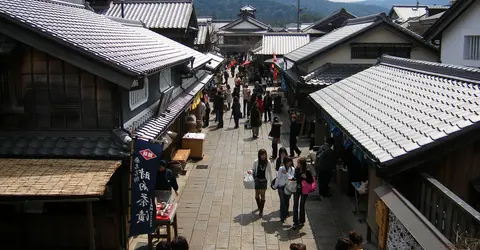
Calle de Okage Yokochō, Ise
Wikipedia
Futami Onsen: Relaxation amongst natural beauty
Futami Onsen is a premier destination in Ise, home to some of the most amazing scenery in all of Japan, centered around warm and relaxing onsen hot springs with luxurious accommodations.
The most famous landmark at Futami is Meoto Iwa, or “the wedded rocks.” The two holy stones are connected by a rope structure known as a shimenawa. The two rocks represent the connection between two of Shinto’s most significant deities: Izanami and Izanagi, the mother and father of Japan within the Shinto mythos. On clear mornings, the sun can be seen rising between the two rocks, encompassing much of the most emblematic features of the Japanese archipelago into one scene. The beaches in the area are also lauded, making them popular with both those who wish to take the time to relax and those who wish to indulge in nature.
Futami Onsen is one of the most significant locations regarding Japan’s traditional spirituality and history, and being able to witness such while indulging in top-tier comfort and accommodation makes it one of the most eclectic destinations in all of Japan.
Península de Shima, lugares para visitar cerca de Ise
Además de estos lugares imprescindibles, se puede pasar un poco más de tiempo en los alrededores de Ise para disfrutar del Parque Nacional de la península de Shima, en especial la bahía de Futami, desde donde se pueden ver las famosas rocas casadas de Meoto Iwa.
En el norte (Toba), es una celebridad diferente a Amaterasu la que atrae a las multitudes: Mikimoto, el fundador de la cría de perlas japonesas, ya que las aguas albergan desde hace mucho tiempo ostras perleras, que solían pescarse en apnea por buceadoras, las ama. Hoy en día sólo bucean para los turistas, pero el museo en Mikimoto Pearl Island rinde homenaje a sus tradiciones, y especialmente al método que permitió a Mikimoto Kokichi hacer de la cría de perlas una industria floreciente.
El sur de la península es más tranquilo y está peor comunicado. También es más fotogénico, ya que la escarpada costa ofrece una magnífica panorámica de las 60 islas de la bahía de Ago y los barcos de pesca de perlas, mientras que Goza es un pequeño puerto pesquero a tiro de piedra de una amplia playa de fina arena blanca (Goza-shirahama).
Si te interesa Ise
Descubre y explora otras ciudades

